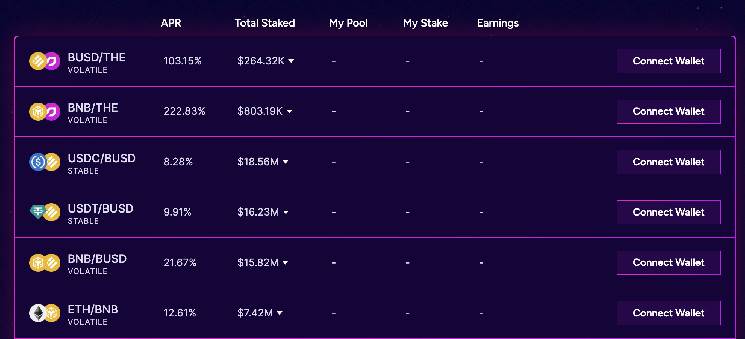Notional Finance has made the jump from Ethereum mainnet to layer-2 with the third iteration of its fixed-rate borrowing and lending protocol.
The new v3 launched publicly on Monday after a month of closed beta testing. It expands beyond simple bitcoin, ether and stablecoin borrowing and lending to emphasize strategies that leverage yield.
An initial suite of leveraged vaults on Arbitrum enables users to borrow substantially against their initial capital. This amplifies their potential yield if the returns exceed the borrowing cost, while also minimizing liquidation risk.
Read more: Arbitrum DAO looking to bet $40M on network protocols
These vaults are designed for advanced DeFi users who are familiar with concepts like leverage loping and want to optimize their yield, Notional’s co-founder and CEO, Teddy Woodward, told Blockworks.
“Originally, we had thought that people would use Notional to borrow against their crypto at a fixed rate, and then go take that crypto to do something non-financial” like pay off a mortgage or auto loan, he said. “And that is just completely untrue.”
Instead, the biggest use case is leverage, whether for speculation or yield-generation.
Notional strategies can be protocol-specific or involve placing capital in external protocols, such as Balancer. For instance, a vault might deposit ether (ETH) into liquidity pools and stake the resulting LP tokens.
Users must be aware of the risks associated with these leveraged positions. These include smart contract risk, the possibility of negative returns when yields are less than borrowing costs, price volatility in borrowing or lending, and the risk of liquidation if collateral ratios decline sharply.
Notional’s lean 7-person team opted for Arbitrum because it has the largest total value locked (TVL) among layer-2 networks, and a DeFi-focused community.
“I think they’ve consistently led on product, so it seemed like the natural choice and, while we would like to be on other layer-2s — and we do intend to be at some point in the future — I think we’re going to focus on Arbitrum right now,” Woodward said.
He remains skeptical of promises made by proponents of cross-chain interoperability.
“When you’re talking about putting significant portions of your net worth, there is still real risk in pushing those cross-chain no matter how you do that,” he said. “It’s not like funds are just going to flow seamlessly between chains — at least not at any point in the near future.”
Instead, Woodward predicts that nascent cultural differences between layer-2 communities will persist.
“I just don’t buy the idea that the underlying layer is going to be abstracted away,” he said, arguing that there are risks of trying to do so, and incentives for token holders of whatever their favored chain may be to prefer transacting within a given layer-2 network.
The role of Notional’s governance token, NOTE, is unchanged in v3, but it may “evolve going forward,” Woodward said. Currently the token can be staked in an 80/20 NOTE/ETH Balancer pool, while maintaining governance rights. The liquidity also acts as a protocol backstop, and in exchange, the protocol directs some of the fees generated towards staked NOTE holders.
Woodward sees a problem with servicing speculative use cases.
“There is an attitude in DeFi that we should be somehow better than this [but] I think that, ultimately, financial speculative use cases is really what has product market fit in DeFi and you kind of can’t fight it.”
Sourced from cryptonews.net.










